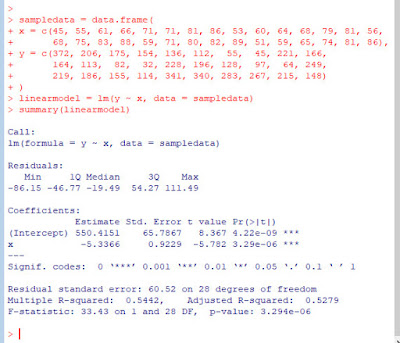 |
| Development of a linear model in R using physical property values of rubber samples. Explore the use of R for linear modeling in a detailed document. |
The evaluation of the the relationship between two variables is a frequently occurring task; for example, in calibrating measurement instruments and modeling experimental data. Here is a Getting Started document: Simple linear regression with Python and R: three ways to begin with. Therein, linear modeling in Python and R is demonstrated and compared. You will learn how
- to import CSV-formated data in Python and R ,
- to use NumPy arrays in SLR computation,
- to derive regression and correlation coefficients with SciPy's stats.linregress() function,
- to use R's data.frame container with the lm() function to fit a linear model presenting your data.
 |
| R instruction resulting into a scatter diagram for the rubber-sample data used in the linear model development |
Keywords: linear regression, Python, R, statistical description, data analysis, machine learning.